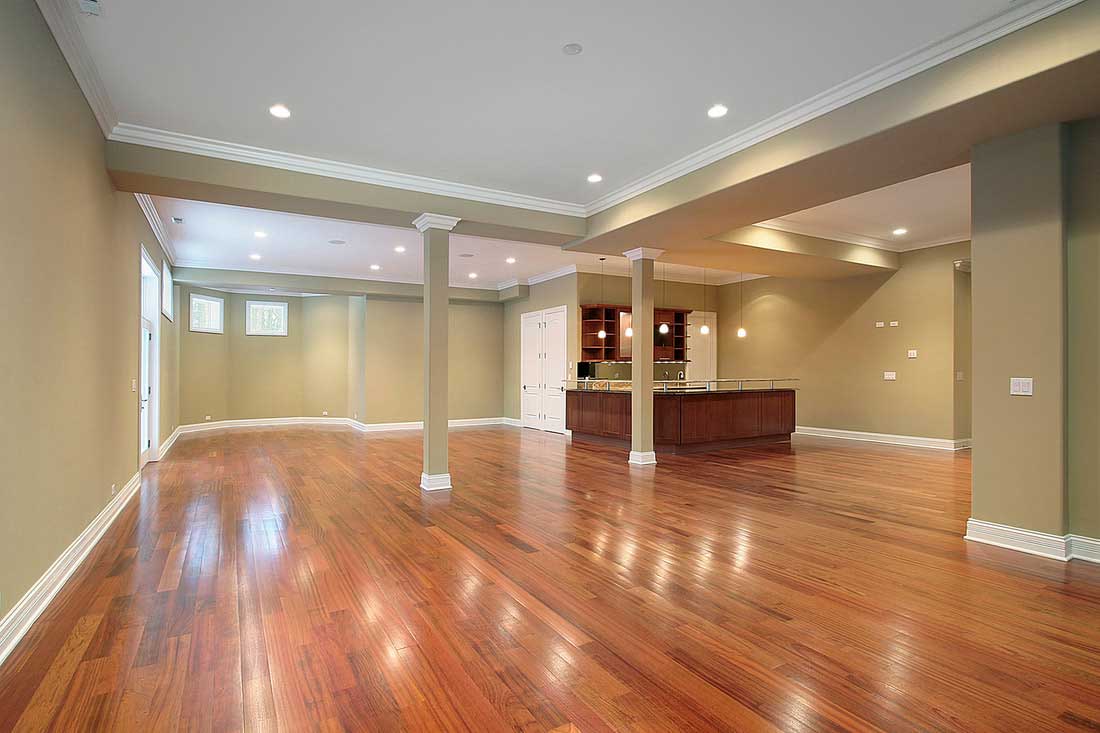Turning your unfinished basement into a livable space can be a big project but the payoff is worth it. It’s like peeling back the layers of an onion! When finishing a basement, there are a number of very important and crucial steps that need to be taken beyond simply installing a drywall and a nice-looking floor.
Furthermore, depending on your part of the country, not all of these steps may be required. However, overall this is a list of best practices to keep in mind when finishing off any basement or crawl space.
1. Install a vapor barrier
Vapor barriers are a material that prevents water from seeping into your house. They work by slowing down moisture from penetrating the inside of the house and are fairly easy to install. This product is easy to install and lowers the energy bills by preventing the humid air to condense on cool pipes, and walls.
A vapor barrier can control the temperature of the basement, Prevent dampness and odor, stave off mold growth, and protects the pipes.
2. Install insulation
Keeping a house’s thermal conditions consistent in the winter is difficult because heat “travels” from areas that are warm to colder places. Basements tend to be colder than upstairs, so the heat will often travel up. As a result, it’s imperative to insulate your basement with high-quality insulation materials.
There are a few places where insulation is most effective, including exterior walls (heating/cooling lost through windows), interior walls (may cover less space on the ground floor) & ceilings. The best insulation placement will depend on how the basement is used and if it’s an existing or newly constructed building. Using a combination of insulation can provide the best results possible.
3. Adding drywall
Finishing the basement walls is one of the most important aspects of your renovation project. Many contractors are using drywall as a solution for finishing the walls and ceiling and it offers an economical, high-quality result. Other companies promote using fiberglass basins.
Drywall provides greater versatility when it comes to design and can be used for various applications including ceilings, walls, or even a rounded corner within archways. A bulkhead finished with drywall will look clean and professional. Round corners are possible too!
4. Add a drop ceiling
A drop ceiling has the huge advantage of being able to access everything very simply, which makes them ideal for many applications. Simply pop out a panel to access mechanical parts, water lines, wiring, and drain lines in the event of a leak. If there is a plumbing problem you can just remove a panel.
5. Install a Sump Pump and Drainage System
A sump pump is a type of pump that can be used to remove excess water from basements and crawlspaces, It requires professional help to install, but are a straightforward machine to operate once you hook them up to the drainage system of your house or building.
The sump pump prevents flooding damage, and reduces mold and mildew, It reduced fire risk, and a sump pump would help protect you from fires, In some cases, floods can lead to electrical fires.
6. Windows with Weather Stripping
If you want to save money on windows, but still want to be able to stop draughts it’s worth considering weatherstripping. It’s easy to install and will provide the same benefits as having new windows.
Here in Ontario, one of the best ways to deal with drafty windows is weatherstripping. It can reduce heat loss, beat the chill, and keep pests & dirt outside. The seals are available in different designs so you’ll always find something that fits your needs.
7. Variety of Lighting
When you are renovating your basement, you will need to decide whether to invest in the best lighting system available or if you’re on a tight budget and still want some illumination. There are various options available so you can make a more well-informed decision.
There are a number of different ways to light up your basement. For example, mounting lights over the ceiling, as well as on the walls and for table or floor lamps provide different varieties. While those that are lower in height can create a cozy ambiance, For brightening the entire space ceiling lights do the best job.
Conclusion
In conclusion, when finishing a basement, there are many things that need to be considered before beginning. It is important to note that the best way to go about finishing a basement is by doing it in stages. This will allow you to take your time and properly plan out the project.

